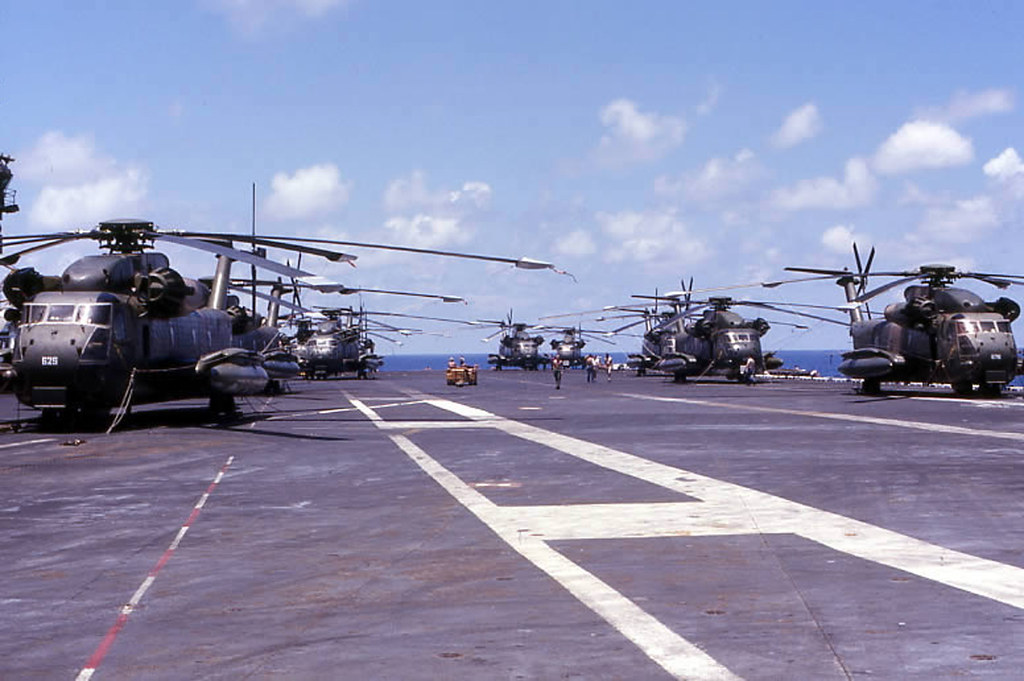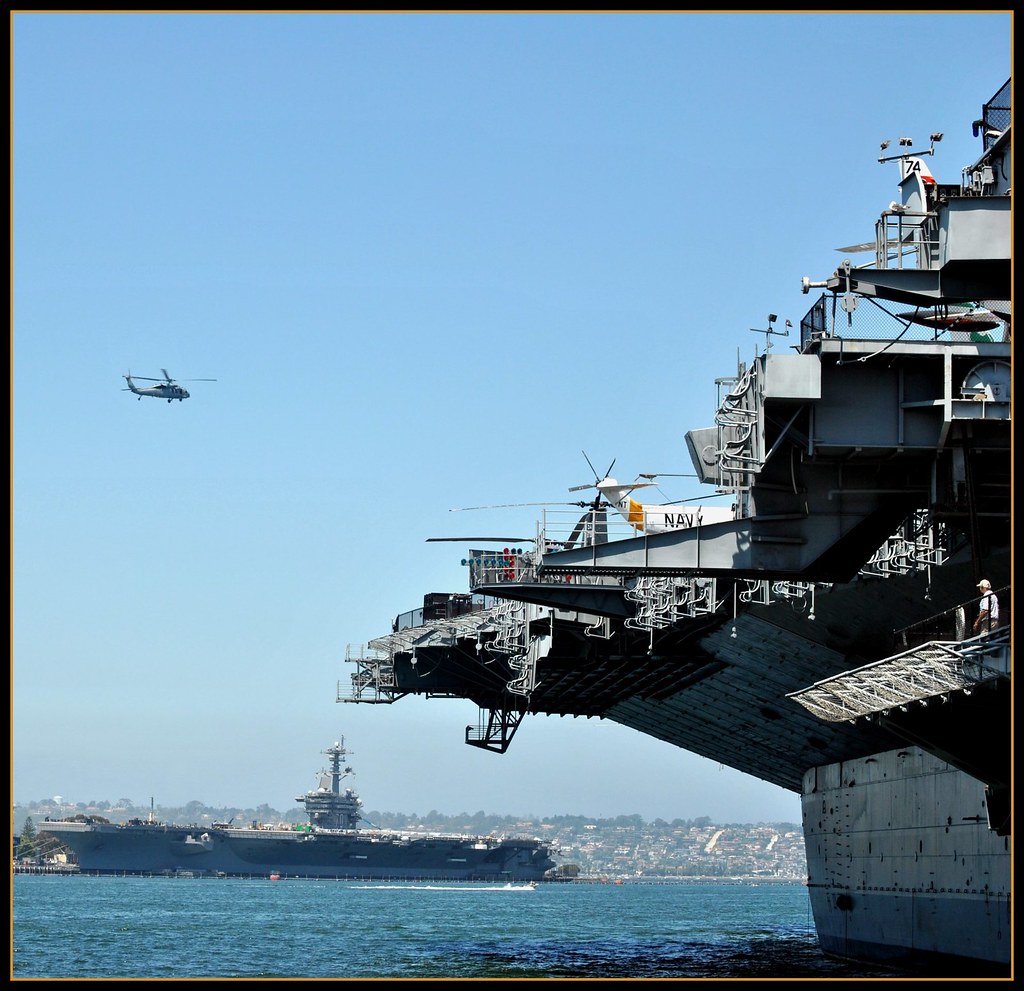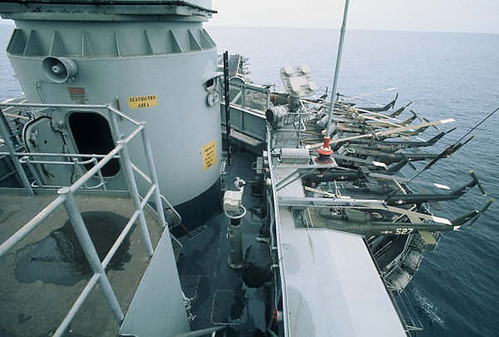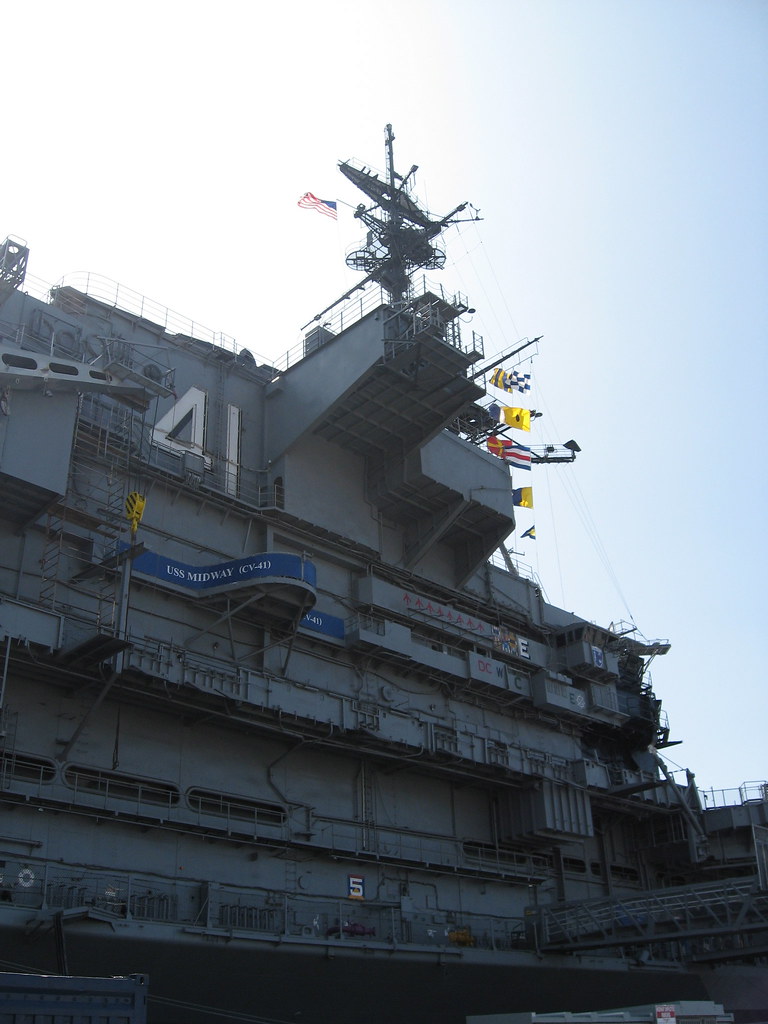
Commissioned in the shadow of World War II, the USS Midway swiftly became the United States Navy’s most enduring aircraft carrier, with a service record that spanned the flux of 20th-century conflict and peacetime engagements alike. Named in honor of the pivotal Battle of Midway in June 1942, this carrier was a manifestation of American naval might and strategic foresight. Her 47-year tenure stands as a testament to the evolution of naval warfare, her decks bearing witness to some of the most significant military operations and advancements of her time.

The USS Midway, designated as the lead ship of her class, featured an armored flight deck and housed an impressive air group of 120 planes. With her commissioning on September 10, 1945, she missed active participation in WWII by a mere week but quickly moved to the forefront of post-war operations. Among her earliest milestones was Operation Frostbite in 1946, where she pioneered flight deck operations in the sub-Arctic, a theatre becoming of growing interest in the Cold War’s geopolitical chessboard.

A year later, in an operation named Sandy, Midway’s strength was showcased as the only ship to successfully launch a captured German V-2 rocket, marking the dawn of naval missile warfare. This technological prowess continued as the Midway proved capable of launching atomic bombs in the early days of nuclear deterrence.

During the first decade of her service, the Midway was primarily assigned to the Atlantic Fleet, demonstrating NATO’s naval might and contributing to the stability of Europe during a time marked by the tension of Soviet expansion. Following a global voyage, the Midway underwent significant modifications, notably the addition of an angled flight deck to better facilitate jet aircraft operations.

Her combat debut came in the fiery skies of Vietnam in 1965. Midway’s aircraft were responsible for both the first and last air kills of the Vietnam War. Amid the chaos of the war’s end, the carrier played a pivotal role in Operation Frequent Wind, evacuating over 3,000 refugees during the fall of Saigon in 1975. This humanitarian act was but one example of the Midway’s versatility and commitment to upholding American values and interests.

In a strategic move reflecting the changing dynamics of global power, the USS Midway was repositioned to Yokosuka, Japan, in the late 1970s, becoming the first American carrier home-ported in a foreign country. This relocation provided a forward base of operations that proved crucial when the stability of the Persian Gulf region was threatened. In response to the 1990 Iraqi invasion of Kuwait, Midway was swiftly deployed, where she became the flagship for naval air operations during Operation Desert Storm, launching over 3,000 combat missions without a single loss.

On April 11, 1992, the storied carrier was decommissioned in San Diego, her active duty ended, but her legacy was far from over. Donated to the San Diego Aircraft Carrier Museum organization, the USS Midway Museum opened to the public in June 2004. Today, she remains moored in San Diego Bay, her once bustling decks now a shrine to her past, a monument to those who served upon her, and a classroom for future generations.
related images you might be interested.









